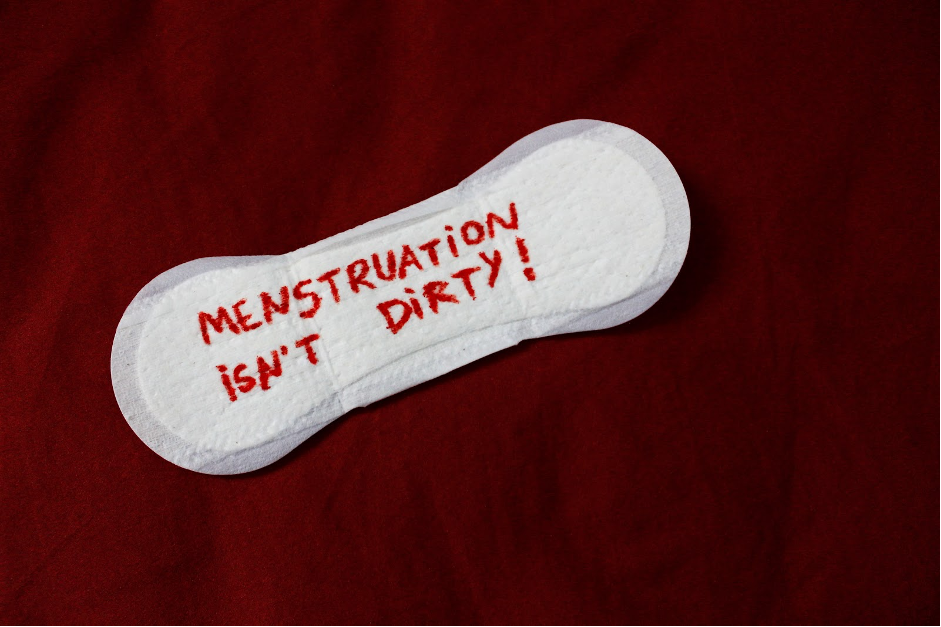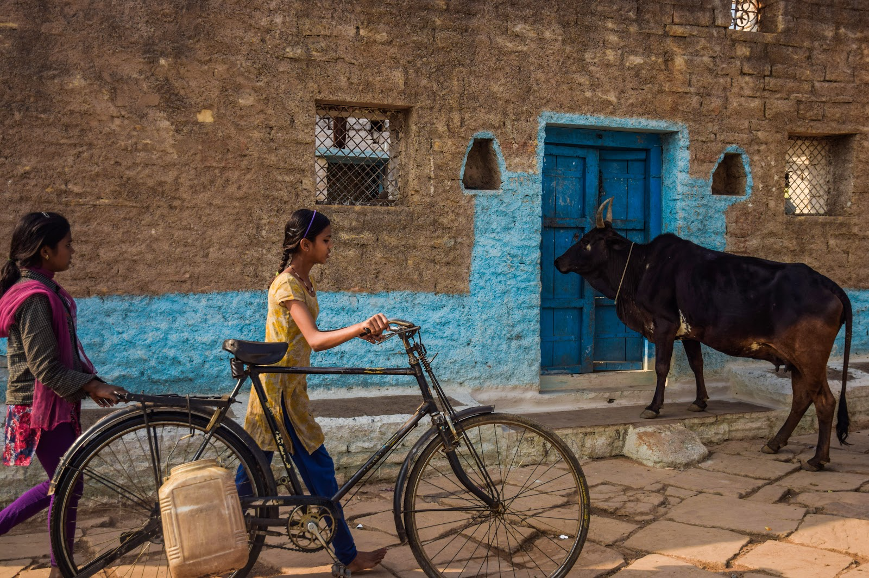This article is part of our Rural Reset series, where we evaluate forward-looking, long-term solutions to the issues and challenges facing the people of rural India. Check out our LinkedIn page every Wednesday to find proposals for innovative solutions in the areas of education, gender and livelihoods.

Periods are not a new phenomenon. They are a regular part of most women’s adolescence and adulthood. But for millions of rural women, the onset of menstruation is associated with a significant decrease in quality of life. Lack of access to menstrual hygiene is the fifth biggest killer of women in the world each year. And for those who continue to live with poor menstrual care, monthly periods can mean pain, infection and the use of materials such as sand and wood shavings in lieu of menstrual pads. The stigma around menstruation in rural areas can also take a psychological toll on women who are forced to drop-out of school and restrict their participation in family and religious rituals during their monthly cycle. Every woman deserves to live with the dignity that proper menstrual care provides.
Traditionally, advocacy for improved menstrual care and resources has come from women-led NGOs and local female leadership. As with many issues affecting Indian women, women experiencing these issues have been most vocally speaking out. But a nationwide system of poor menstrual care impacts all parts of society, not only the lives of women who suffer at the system’s hands. For too long, the fight for universal menstrual care has been seen as a womens-only fight. It is time for all of us, governments, NGOs, private businesses and, most importantly, the men who make up half of Indian society, to join in the movement for universal menstrual care.
Barriers to menstrual care: the three A’s
Awareness
Studies indicate that 71% of adolescent girls in India report no knowledge of menstruation before their first period. Widespread lack of education and awareness around menstrual cycles thus creates a culture of fear and misinformation. Even after the onset of menstruation, adolescent girls are often not taught by their female elders how to attend to their own menstrual care in a hygienic and gentle manner. These girls then continue this cycle once they have female children of their own.
Acceptance
Traditional cultural norms and pervasive taboos around menstruation lead to the ostracization and isolation of menstruating women. One of the most widely believed myths remains that menstrual blood, and thus menstruating women, are dirty and impure. As a result of this and other myths, menstruating women face harsh restrictions during their monthly cycles and are often forced to stay home from school, remain indoors, avoid kitchens and temples and, in some cases, are relegated to ‘menstrual huts,’ secluded from their friends and families. These harsh norms breed shame and secrecy in young girls around their monthly cycles. And these feelings of shame lead many young girls to pursue dangerous self-menstrual care practices, including the use of unsanitary menstrual products, all in the interest of hiding their period from others.
Access
One of the greatest barriers to women’s proper menstrual care is a lack of access to the necessary hygienic products and facilities. According to a study performed in cooperation with UNICEF, only 12% of menstruating women in India have exposure to proper period products such as sanitary pads. The other 88% of women are largely dependent on unsafe alternatives such as rags, cloth, ash, hay and sand. This practice is not only undignified but also extremely dangerous, often leading to discomfort, infection and even death. An absence of proper sanitation infrastructure including private spaces for women, clean water for washing, sanitary toilets and proper disposal mechanisms for menstrual products also poses a significant hurdle to proper care. 40% of all government schools alone in India lack proper functioning of common toilets and of those with functioning toilets, 40% of schools lack separate toilet facilities for girls.
The next frontier in the movement for gender equality

Menstrual care is a crucial foundation of the movement for gender equality in India because of its significant externalities on all other facets of women’s lives. Poor menstrual health care, and associated restrictions and perceptions, is associated with strong gender disparities in health, education and work outcomes. It has been estimated that 1 in every 5 girls drops out of school at the onset of their first menstrual cycle. And this lack of education coupled with monthly restrictions during periods keep many women from pursuing meaningful work later in life. If India is to improve its ranking of 122 out of 189 countries in the HDR Gender Inequality Index, it will have to address the many problems with its system of menstrual care.
It’s on all of us to join in the movement
The fight for universal menstrual care will require cooperation across many different parts of society.
Governments
State, local and national governments have the ability to elevate universal menstrual care to a priority within their political agenda. From regulating the prices and taxes on menstrual care products, to providing funding for schools and public buildings to improve toilet facilities, to even mandating an inclusion of menstrual hygiene education as part of government school curriculum, governments have numerous policy levers that they can pull to improve menstrual care on a massive scale. And governments also help drive agendas for non-governmental actors, who often try to align with government priorities to receive funding and promotion. Through partnerships with some of these actors, including grassroots NGOs and large corporate players, governments can amplify their impact and involve more players in the movement.
Corporations and businesses
By leveraging their immense resources and large employee bases large, corporates and smaller brands alike have the ability to accelerate impact and change the conversation around menstrual care. In one example, food-delivery company, Zomato, recently announced the rollout of a new policy allowing female employees to apply for up to 10 days of “period leave” per year. While this policy has obvious immediate benefits for the company’s female and transgender employees, corporate decisions such as these also begin to address some of the shame and stigma associated with menstruation by normalizing them as a “part of life.” Brands can further address these societal taboos around menstruation through digital awareness campaigns that align their companies with the fight for universal menstrual care. Corporates can also mobilize their resources to support grassroots NGOs who are doing work on the ground and in communities. As part of the “Wind Beneath Her Wings” campaign, a joint initiative between social enterprise Dharma Life and Spain-based women’s sportswear brand Believe Athletics, every sale on the brand’s website corresponded to one young girl receiving a sanitary hygiene kit. Campaigns such as these provide crucial grassroots support and help brands put their money where their mouth is.
NGOs
Non-governmental organizations are responsible for mobilizing communities on a grassroots level and executing programs that directly impact their stakeholders. While there are hundreds of Indian NGOs that work directly in the menstrual health space, NGOs aligned with other areas also have the power to bring menstrual care and education to their stakeholders. By serving as the bridge between their communities and the larger movement, NGOs are a foundational player in the fight for universal menstrual care.
Indian Men
Periods have long been considered a women’s-only issue. But excluding men from the movement for universal menstrual care has only served to increase the proliferation of harmful misinformation around periods and stunt the progress of menstrual care activists. 84% of the members of India’s parliament are male. In order to make any real progress in the area of menstrual care, men must become champions of the movement. This is done, in part, by actively involving more men in menstrual care interventions. Providing menstrual education not only to women, but also to men, not only directly addresses some of the stigma and taboos around menstruation but also ensures that all community members feel invested in the improvement of women’s welfare. Periods are thus transformed from something shameful and secretive, to a natural part of the lives of their friends, sisters, mothers and wives. It is no longer enough for women to be the sole advocates for their own care. Real change requires men to take the next step.
Conclusion:
Achieving universal access to menstrual care, particularly for women in rural areas, would significantly improve women’s overall health and allow them to participate more fully in society. While periods may only last a few days, their impact on the lives of rural women can be felt throughout the entire month. Through proper education and access to care, these women can live more fully throughout all of their days. We now must all work together to make this a reality.



